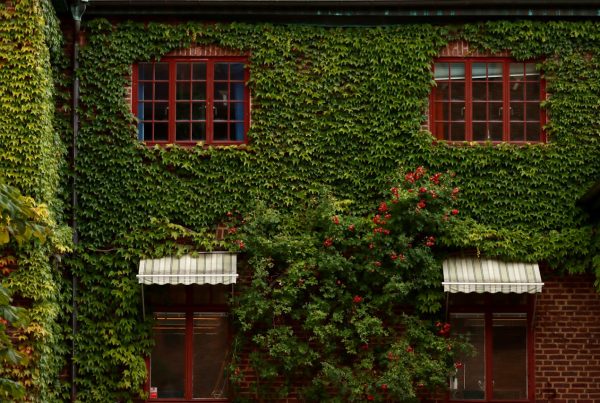Back in 1967, President Lyndon B. Johnson made a speech regarding water scarcity and conservation for an event called the International Conference on Water for Peace, attended by UN delegates from all over the world. Coincidentally, a week earlier, President Johnson, had just signed a bill for realizing a plant in California that would double the world’s present capacity for desalting water.

Stark against the sun, the earth lies cracked and parched in drought-ridden California.
(Image from Stateofthenation2012.com)
It’s amazing that as far back as forty-eight years ago—almost half a decade—the world’s leaders were already convening to ponder the state of our waters. For the average person, such a conference might seem unthinkable, given the fact that we live in a planet that’s two-thirds covered with water.
But while the oceans of the world might seem endless and unfathomable, a lot of it—about 95.5{e3829ec1db02d54faaf9fa2de0d48db26af01d7a7944a63c3b26976124791cab}—is just salt. Only 2.5{e3829ec1db02d54faaf9fa2de0d48db26af01d7a7944a63c3b26976124791cab} is freshwater, of which about three-fourths are frozen in glaciers and icecaps, inconveniently out of reach. That leaves us with a mere 1 percent to meet our needs. Sadly, this tiny amount of water is often improperly distributed, irresponsibly wasted, and, worse, polluted.
Weather and Lifestyle
It’s easy to attribute the recent drought in California to global warming. The culprit, an abnormal atmospheric feature with the improbable name of Ridiculously Resilient Ridge, is responsible for diverting rain farther north away from California, causing extreme dry spells in the region.
And yet lifestyle is as much a part of the equation as well, especially if it’s fueled by excessive needs and unsustainable practices. Swimming pools, for instance, abound in California: 1.2 million private pools and about 300,000 commercial swimming pools all over the state as of May of this year, according to the California Pool and Spa Association (CPSA). The drought has been a wake-up call thus far, forcing residents, rich and poor alike, to rethink and cut back on their water consumption, even if perhaps a bit late.
Underground Reserves
Turning to our aquifers, that underground layer of permeable rock where water seeps through and gets collected over the decades and centuries, is, at best, just a bandage solution. In a perfect world, aquifers get replenished and recharged through the natural cycle of water as it flows from rivers and lakes, evaporates and condenses as rain, and then gets absorbed by the ground.
But again, we are sucking up our aquifers dry due to excessive demand, giving them no time to recharge through natural processes. Overpumping can cause land to sink from under, collapsing walls, and forcing farmers to dig deeper and pump even more water out of the ground.
Our seriously depleted aquifers are a cause for concern, but as the National Geographic puts it, it’s easy to dismiss the threat largely because aquifers are hidden and out of sight.
Green Building and Water Conservation
When it comes to water usage, agriculture tops the list, accounting for 70{e3829ec1db02d54faaf9fa2de0d48db26af01d7a7944a63c3b26976124791cab} of total usage worldwide. Commercial industries and domestic meanwhile account for 20{e3829ec1db02d54faaf9fa2de0d48db26af01d7a7944a63c3b26976124791cab} and 10{e3829ec1db02d54faaf9fa2de0d48db26af01d7a7944a63c3b26976124791cab} respectively.
While building construction isn’t exactly a major water hog, over the course of the life of the building, water will be inevitably used by tenants and guests, for cleaning facilities, for garden maintenance, etc. We also have to note that where buildings are erected, a considerable area of land has already been paved, effectively sealed and rendered impervious to water. The result is that rainwater has no way of seeping deep into the ground, rushes into drainages instead of replenishing our aquifers.
In this vein, the USGBC has best practices for water conservation in and out of green buildings. This includes:
- Reducing irrigation for landscapes
- Reusing graywater for landscapes
- Reducing impervious cover
- Promoting infiltration
- Reducing and eliminating pollution from stormwater runoff
- Capturing and treating stormwater runoff
- Installing a stormwater management system that protects receiving channels from excessive erosion
- Mimic the site’s existing natural hydrology processes in stormwater management
- Reducing water consumption through water-saving bathroom fixtures and fittings
- Using appliances and equipment that meet required performance standards
- Equipping building with water-saving technology such as water meters, overflow alarms, etc.
In sum, there’s no ignoring the fact that water is scarce resource, perhaps even more valuable than oil can ever be. The drought in California is everyone’s battle: not just the governments’ or industry leaders’ or the social activists’. It is a wake-up call not just for one state but for the rest of the world.











